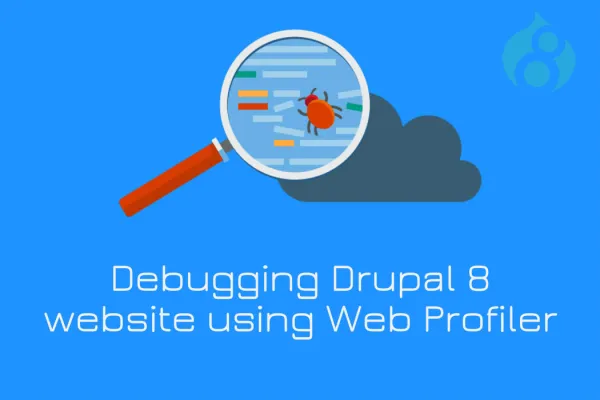To be at the top of digital ladder, speed is everything. From engaging customers on e-commerce platforms to delivering critical information in industries like healthcare and financial services, every second counts. For enterprises managing multi-brand, multi-location operations, the stakes are even higher. Imagine a bank with multiple regional websites, a global retailer managing region-specific marketplaces, or a university catering to diverse departments and campuses—each relying on Drupal to power their digital presence.
Now consider this: What if those digital experiences were slowed down by lagging load times, fragmented workflows, and under-optimized infrastructure? The opportunity costs could be staggering—lost customers, diminished trust, and even compliance risks.
This is the challenge many enterprises face today. But it’s also an opportunity to transform how they approach digital performance. Here’s how enterprises like yours can ensure your Drupal site not only keeps pace but stays ahead.
Why Speed Matters More Than Ever
For the Chief Information Officer (CIO) or Chief Technology Officer (CTO) overseeing complex digital ecosystems, site speed isn’t just a technical metric—it’s a business-critical KPI. A one-second delay in page load time can lead to a 7% drop in conversions. When scaled to a global enterprise, that one-second lag could mean millions in lost revenue.
A healthcare network, for example, may struggle with patients bouncing off slow-loading appointment booking pages. In e-commerce, milliseconds can be the difference between a customer completing a transaction or abandoning their cart.
For digital transformation leaders, the challenge goes beyond speed—it’s about scalability, seamless integration with enterprise systems like CRM or ERP, and creating unified customer experiences across touchpoints.
The Unique Challenges of Scaling Digital Presence
Let’s take a closer look at what businesses face:
Multi-Brand Complexities
Enterprises with multiple brands or regional sites often grapple with governance. Each website may operate independently, leading to inefficiencies, inconsistencies in branding, and fragmented user experiences.
Inefficient Workflows
Development cycles are often slowed by outdated processes or a lack of standardization across teams. For CIOs and CTOs, this translates into high operational costs and slower time-to-market for new features.
Security and Compliance Risks
For industries like financial services or healthcare, where data sensitivity is paramount, a slow or vulnerable site isn’t just inconvenient—it’s a liability.
High Maintenance Costs
Maintaining a large IT team or relying on generic service providers often leads to inflated costs without delivering the necessary agility or performance gains.
These pain points aren’t just technical hurdles; they’re barriers to growth, innovation, and customer satisfaction.
A Strategic Approach to Drupal Site Optimization
Addressing these challenges starts with a clear, strategic approach to Drupal site optimization:
1. Start with an Audit
Every transformation journey begins with understanding the current state. For example, a global media company we worked with discovered that over 30% of its site load time was being consumed by redundant database queries. By auditing the site’s performance, we identified areas to streamline and significantly reduce response times.
2. Enable Smarter Caching
For organizations managing high-traffic websites, caching is critical. Advanced caching solutions, like Redis and Varnish, ensure frequently accessed content is delivered faster. The result? Improved user experiences and reduced server loads, even during traffic surges.
3. Optimize Media Assets
Image-heavy websites, like those in e-commerce or publishing, often see a disproportionate load time due to unoptimized assets. Techniques like lazy loading, image compression, and serving responsive image styles can dramatically reduce page weight.
Building for Scalability and Transformation
Optimization isn’t just about addressing immediate issues—it’s about building a foundation for scalability and long-term success. Enterprises undergoing digital transformation must align their Drupal capabilities with broader goals, such as:
Seamless Integration
Enterprises often face challenges integrating their Drupal sites with enterprise systems like Salesforce, SAP, or Oracle. Poor integration can result in siloed data and fragmented customer experiences. Tailored solutions can bridge these gaps, ensuring data flows seamlessly across platforms.
Streamlined Governance
Centralized governance models can address inefficiencies and inconsistencies, enabling teams to focus on innovation rather than troubleshooting.
Future-Proof Infrastructure
As technology evolves, enterprises need infrastructure that adapts to changing demands. This includes adopting containerized deployments, serverless architectures, and leveraging cloud hosting solutions for scalability.
What Success Looks Like
Imagine this: A large retail chain with hundreds of regional sites sees its page load time drop from four seconds to under one. The result? A 25% increase in conversions during peak holiday sales.
Or consider a university consolidating its fragmented web presence. By optimizing its Drupal ecosystem, the institution reduced maintenance costs by 40% and improved site performance, enhancing the experience for students and faculty alike.
These aren’t hypothetical scenarios—they’re real outcomes achieved by enterprises that prioritized Drupal site optimization.
Why You Can’t Afford to Wait
The cost of delaying optimization goes beyond dollars—it’s about staying competitive in an increasingly digital-first world. Enterprises that take a proactive approach to Drupal site optimization gain a competitive edge, delivering faster, more seamless digital experiences to their users.
For CIOs, CTOs, and digital transformation leaders, the message is clear: Drupal site optimization isn’t just a technical necessity—it’s a strategic advantage. Whether you’re scaling for growth, reducing costs, or aligning with broader transformation goals, the time to act is now.
By addressing pain points and leveraging Drupal’s robust capabilities, enterprises can unlock the full potential of their digital ecosystems.
Your digital future starts with a faster Drupal site. Are you ready to make it happen?





